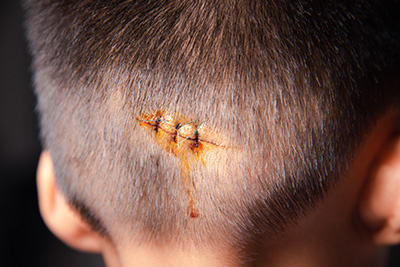
Cuts and Lacerations are common injuries that can happen anytime and anywhere. These types of injuries can be serious or minor, depending on the injuries. Whether it’s a kitchen accident, a slip, or a sharp object mishap. It is essential to respond to cuts and lacerations, as it can make a significant difference in the healing process and prevent potential complications.
In this blog, we will explore what you need to do when faced with these injuries:
After a cut or laceration, the first thing to do is understand its severity. While lacerations are often deeper and bleed more heavily, minor cuts may only involve minor bleeding. For minor cuts, you can typically manage them at home, but lacerations require professional medical attention.
To get rid of any debris or foreign particles, gently wash minor cuts with warm water and soap. To clean the area, use a gentle antiseptic solution; stay away from alcohol and hydrogen peroxide because they can be too harsh on the skin. After giving the wound a thorough rinse, pat it dry with a sterile cloth.
Use a clean cloth, sterile gauze, or a bandage to gently but firmly press on cuts that are still bleeding. If you can, elevate the wounded area to lessen the amount of blood flowing to the wound. Until the bleeding stops, keep applying pressure for at least ten to fifteen minutes.
To keep the wound clean and free of infection, cover the wound with an adhesive bandage or sterile dressing as soon as the bleeding stops. To encourage healing, change the dressing regularly. Adhesive bandages should not be applied directly to cuts as they may adhere to the wound.
Seek medical attention right away if you have deep or severe cuts, if there are foreign objects embedded in the wound, or if the bleeding does not stop despite your best efforts. Stitches might be necessary for lacerations, and a medical expert can properly diagnose and treat the injury.
For prompt and professional care, visit one of our convenient locations in Bolingbrook or Carol Stream. Our experienced team at Suburban Medical Group is ready to provide expert wound care and ensure proper healing. Don't wait - seek medical attention today if needed!
See a doctor to determine whether a tetanus shot is necessary if the cut was caused by a rusty or dirty object. Contaminated wounds can give rise to the deadly bacterial infection tetanus.
Keep a close eye out for any indications of infection, such as discharge, redness, swelling, or growing pain. See a doctor right away if you experience any of these symptoms.
After the wound has healed, you may want to use silicone sheets or topical scar creams to reduce scarring. Scars take time to go away, so be patient.
Keep in mind that providing proper wound care is essential to preventing complications and ensuring a quick recovery. Small cuts and wounds can be treated at home, but it’s important to know when to seek professional medical assistance. It’s always safer to consult a doctor when in doubt.
In summary, knowing how to react to cuts and abrasions is an important ability that can influence the healing process and lower the possibility of problems. These easy steps will help you administer first aid right away and take the necessary actions to guarantee a quick and full recovery.